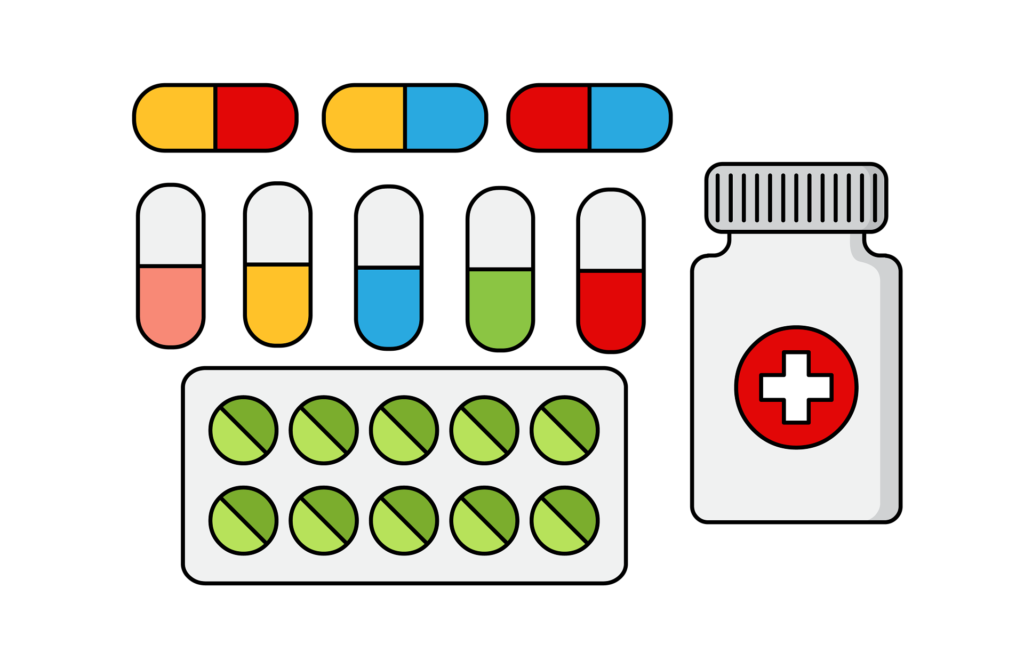The K18 pill, containing 5mg of oxycodone hydrochloride, is a prescription medication that plays a significant role in pain management. As a powerful opioid analgesic, it is primarily prescribed for moderate to severe pain, particularly when other pain relievers are inadequate. This article will delve into the benefits, uses, and potential side effects of the K18 pill, along with considerations regarding dependency and addiction.
What is the K18 Pill?
The K18 pill is a round, white tablet imprinted with “K18.” It is classified as a Schedule II controlled substance due to its potential for misuse and addiction. Oxycodone, the active ingredient, works by altering the way the brain and nervous system respond to pain. This medication is often prescribed after surgeries, for cancer pain, or in cases of severe injury.
Benefits of the K18 Pill
1. Effective Pain Relief
One of the primary benefits of the K18 pill is its efficacy in providing rapid and effective relief from severe pain. It is often utilized in acute pain scenarios where immediate intervention is necessary. Patients report significant improvements in their quality of life due to reduced pain levels, allowing them to engage in daily activities with greater ease.
2. Short-Acting Formula
The K18 pill is designed for immediate relief, making it suitable for situations where pain control is needed quickly. This short-acting formulation allows for flexibility in managing pain, particularly in acute episodes that may not respond to longer-acting medications.
3. Versatile Usage
Beyond postoperative pain, the K18 pill can be prescribed for various conditions, including but not limited to:
- Cancer-related pain
- Chronic pain syndromes
- Severe headaches or migraines
- Pain from injuries or trauma
How the K18 Pill Works
Oxycodone works by binding to specific receptors in the brain and spinal cord known as opioid receptors. When it binds to these receptors, it blocks the transmission of pain signals, altering the perception of pain and emotional response to it. This interaction produces both analgesic effects and feelings of euphoria, which can contribute to the potential for misuse.
Side Effects of the K18 Pill
While the K18 pill can provide significant pain relief, it is also associated with a range of side effects, some of which can be severe. Common side effects include:
1. Drowsiness and Sedation
Many users experience drowsiness, making it essential to avoid activities that require full alertness, such as driving or operating heavy machinery.
2. Nausea and Vomiting
Gastrointestinal disturbances, including nausea and vomiting, are common, particularly when first starting the medication.
3. Constipation
Opioids frequently cause constipation, a side effect that can become problematic if not managed properly. Patients are often advised to increase fluid intake and consider dietary adjustments.
4. Respiratory Depression
One of the most serious risks associated with opioid use, including the K18 pill, is respiratory depression, which can be life-threatening. This risk is heightened in individuals with pre-existing respiratory conditions or those taking other central nervous system depressants.
5. Dependence and Addiction
Prolonged use of the K18 pill can lead to physical dependence and addiction. Tolerance may develop, leading patients to require higher doses to achieve the same level of pain relief, further increasing the risk of misuse.

Managing Dependency and Recovery
If you or someone you know is struggling with dependency on the K18 pill or other opioids, it’s crucial to seek professional help. Here are some steps to consider:
1. Consult a Healthcare Provider
Speak with your doctor about any concerns regarding dependency. They can provide guidance and possibly suggest alternative pain management strategies.
2. Gradual Tapering
If discontinuation is necessary, it’s essential to taper off the medication gradually under medical supervision to minimize withdrawal symptoms.
3. Support Groups and Counseling
Engaging in support groups or counseling can provide emotional support and coping strategies for those struggling with addiction.
4. Alternative Pain Management
Explore non-opioid pain management options, such as physical therapy, acupuncture, or alternative medications, to help manage pain without the risks associated with opioids.
Conclusion
The K18 pill, with its active ingredient oxycodone hydrochloride, is a powerful tool in managing severe pain, but it comes with significant responsibilities and risks. Understanding its benefits, proper usage, and potential side effects is crucial for anyone prescribed this medication. If dependency or addiction concerns arise, it is vital to seek support and explore alternative options. Responsible use of the K18 pill can enhance quality of life while minimizing the risks associated with opioid medications.
FAQs About K18 Pill
1. What is the K18 pill used for?
The K18 pill, containing 5mg of oxycodone hydrochloride, is primarily used to treat moderate to severe pain, especially when other pain relievers are ineffective.
2. How does the K18 pill work?
Oxycodone works by binding to opioid receptors in the brain and spinal cord, blocking pain signals and altering the perception of pain.
3. What are the common side effects?
Common side effects include drowsiness, nausea, vomiting, constipation, and respiratory depression. Serious side effects may require immediate medical attention.
4. Is the K18 pill addictive?
Yes, the K18 pill has a potential for addiction and dependence, particularly with prolonged use. It’s classified as a Schedule II controlled substance.
5. How should I take the K18 pill?
Follow your healthcare provider’s instructions carefully. It’s usually taken as needed for pain, but do not exceed the prescribed dosage.










![[ozzmodz] forum prefix filter block 2.0.1](https://maxinstagramfollowers.com/wp-content/uploads/2024/09/desktop-1985856_1280-100x65.jpg)


